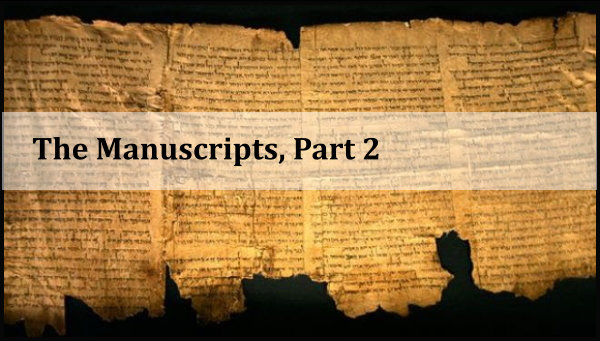By Tyson Thorne

The primary textual critic of the New Testament is Dr. Bart Ehrman, which is why we are spending time overcoming his objections. The number of textual variants in the New Testament manuscripts, as we discussed last time, are numerous. Dr. Ehrman states the number could be as high as 400,00! In truth, the number of variant readings is all determined by how one defines a variant. In Ehrman’s case it’s any difference, which is why the number is so large. Let’s look at what “variant” means and determine if there is any validity to the objection itself.
AS I just mentioned, “variant” can be any difference between the 26,000 plus manuscripts we have of the New Testament. Of the estimated 400,000 variants, 75% are spelling differences. These may be valid differences like the word color and colour in English, or they may be a misspelling like collor. Either way, the meaning of the text is preserved.
That leaves us with 100,000 variants, which is still a pretty significant number. The next largest number of variants includes such issues as differences of word order, the use of synonyms, and the use of definite articles. This sounds pretty academic, I know, but it is simple to understand.
First, it is important to understand that there is no correct word order in Greek. In my first Greek class taught at Colorado Christian University it was explained on day one that, in Greek, the following two sentences mean the same thing: “The ball hit the boy,” and “The boy hit the ball”. While English uses word order to determine the object of an action, Greek instead uses endings attached to the words. This makes word order unnecessary. For this reason, the meaning of the text is not impacted.
Second, the use of synonyms, that is a word that has a similar meaning, also sometimes occurs. Did Jesus die for the “whole” world, or the “entire” world? That is the kind of variant that sometimes occurs, and again, the meaning is not changed.
Finally, the use of definite articles is common in some Greek documents and not in others. For example, some may state that “Jesus died for the whole world” while others may read “The Jesus died for the whole world.” Once again, the meaning is clear.
I do not have a percentage to assign to these variant readings, but it is the next largest part of all variants. The third largest category of alternate readings could change the meaning of a text but are ruled out as possible readings because they only occur in more recent manuscripts. In other words, the oldest manuscripts agree on a particular reading and only the newest one’s contain a particular reading. It is fairly simple to determine the appropriate rendering of the text in such a case, so these issues have no impact on the meaning.
The combination of the second and third categories of variants account for another 24% of the whole, leaving only one percent of variants. That means that out of the 400,000 issues Ehrman raises, one 4,000 might be meaningful. That is still a sizable number of problems, but not overwhelming. Through the study of the original language, quotes of the New Testament in other manuscripts (such as early church writings and prayer books) we could narrow the field of troubling variants still further. The main point, however, is that none of these remaining variants would\could\might alter our understanding of any key doctrine. Due to the Bible’s remarkable consistency of its teachings, we can reduce the complexity caused by the remaining variants by choosing the reading that agrees with the rest of Biblical doctrine.
If you have more than a passing interest in this subject I recommend reading the NET version of the Bible, as its translation is the result of hundreds of scholars and it contains all of the translators notes.
With all these variant readings it may appear that the great number of New Testament manuscripts is more of a liability than an advantage, but nothing could be further from the truth. The more copies we have of a text the easier it is to piece together what the original manuscript contained. We can be very much assured that the text we have today is reliable.
Some may argue that it would be much easier if we had the original copies and assert that God has not done a good job or preserving his Word. While I agree that having the originals would be helpful, I disagree with the later assertion. God has preserved his Word through multiplication, rather than preserving a single copy that might be destroyed. Furthermore, with man’s propensity to worship created things rather than the Creator I see wisdom in not preserving the originals.
Of all the variants in the New Testament manuscripts there are two that we have not yet discussed, and in some ways they may have the greatest impact. We’ll tackle them… next time.
Continue to Part Three
|
|
